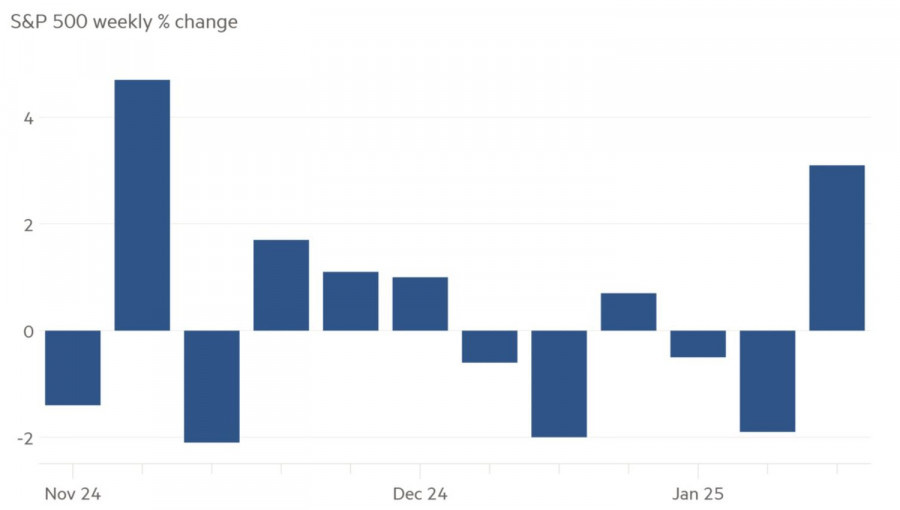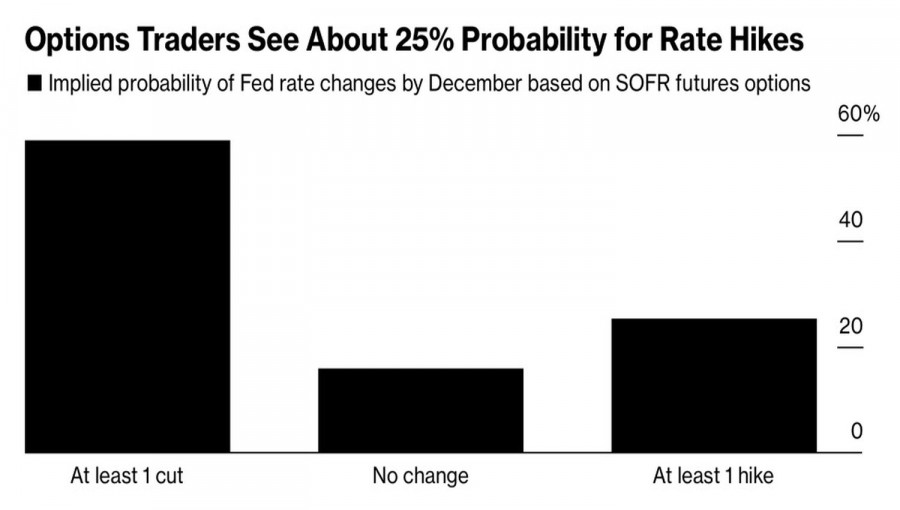Vea también


 20.01.2025 09:02 AM
20.01.2025 09:02 AMThe S&P 500 achieved its best weekly performance since the November U.S. presidential election, just before Donald Trump's inauguration. Initially, investors worried that his protectionist policies could negatively impact the U.S. economy. However, they now believe that the potential benefits from deregulation and fiscal stimulus will outweigh the drawbacks. Is this wishful thinking?
The broad market index surged by 4.7% during the week ending January 17, fueled by a strong start to the corporate earnings season and a 0.2% month-over-month decline in core inflation in the U.S. Major banks such as JP Morgan, Goldman Sachs, and Citigroup reported positive fourth-quarter earnings, alleviating investor concerns. The likelihood of the Federal Reserve refraining from rate cuts in 2025—or even increasing rates—has decreased, boosting confidence in two expected monetary easing actions this year. Federal Open Market Committee (FOMC) official Christopher Waller even suggested the possibility of easing monetary policy in March.
Bank of America suggests that U.S. equities could benefit from Donald Trump's return to the White House. During his first term, Trump viewed the performance of U.S. stock indices as a measure of his effectiveness, and it is unlikely that this perspective will change from 2025 to 2028. UBS Global Wealth Management estimates a 9% increase in corporate earnings this year, which could push the S&P 500 to 6,600.
According to Jefferies, since 1929, the S&P 500 has historically followed a zigzag pattern during presidential inaugurations, averaging gains of 8.3% and 9.5% six and twelve months, respectively, after a new president takes office.
In the early days of Trump's second term, investors will consider the impacts of tariffs and anti-immigration policies alongside the potential benefits of fiscal stimulus and deregulation. It appears that the new president may begin by implementing import tariffs, setting this term apart from his previous one.
During his term from 2017 to 2020, Trump stimulated the economy through tax cuts but later resorted to tariffs and trade wars, which ultimately slowed down growth. This time, the sequence may be reversed. Import tariffs are likely to accelerate inflation and hinder economic growth, even though the current outlook remains strong. For example, the IMF predicts that U.S. GDP will grow by 2.8% in 2024. Consequently, uncertainty regarding the Federal Reserve's policy stance could increase, with derivatives currently indicating a 25% probability of a federal funds rate hike.
On the daily chart, the market illustrated the principle: "If the market does not move as expected, it is likely to move in the opposite direction." After an unsuccessful attempt to break below the lower boundary of the triangle, the market successfully breached the upper boundary. A strong test of resistance at 6010 could justify expanding long positions that were initiated at 5930.
You have already liked this post today
*El análisis de mercado publicado aquí tiene la finalidad de incrementar su conocimiento, más no darle instrucciones para realizar una operación.


